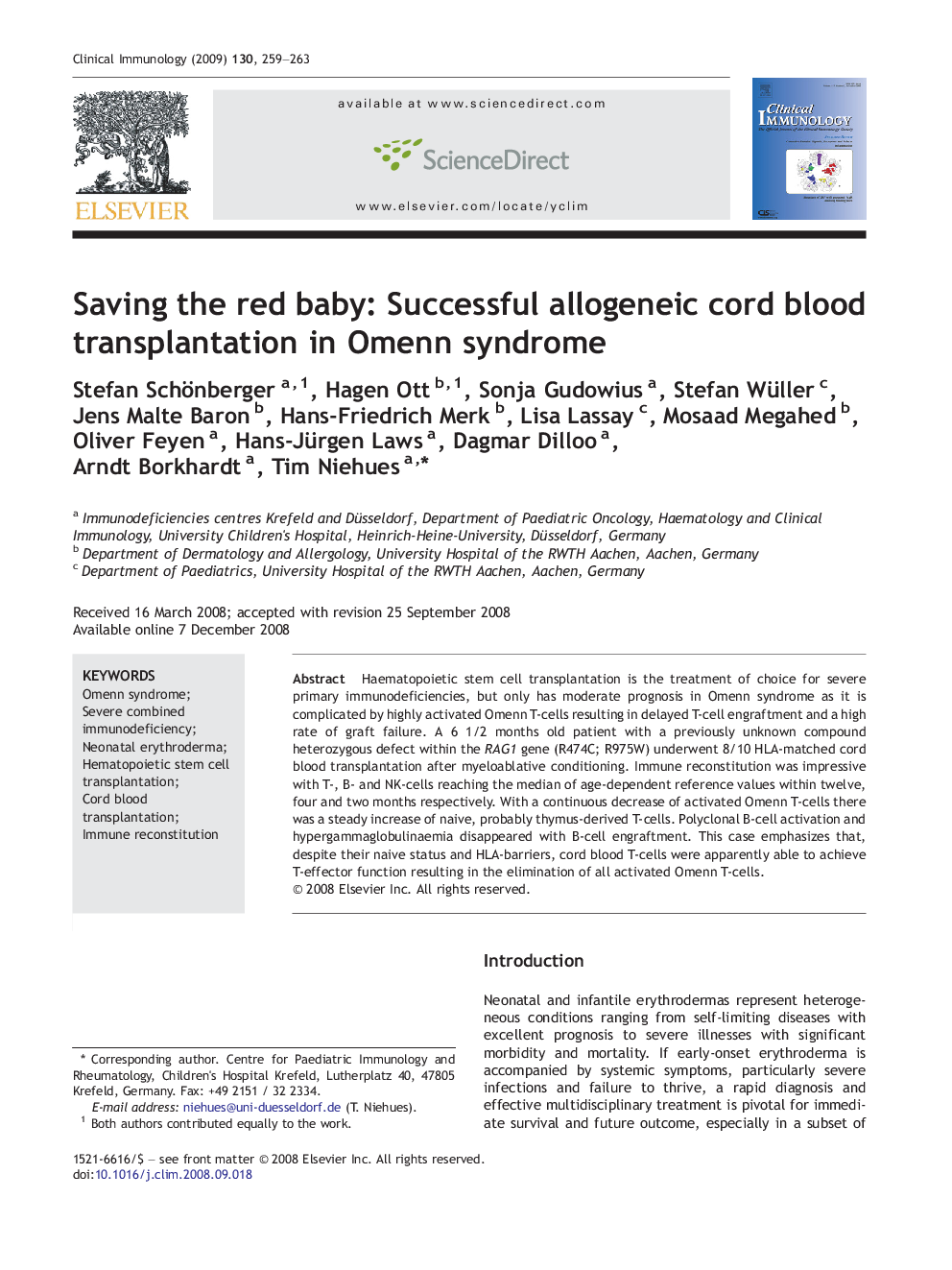| Article ID | Journal | Published Year | Pages | File Type |
|---|---|---|---|---|
| 3257414 | Clinical Immunology | 2009 | 5 Pages |
Haematopoietic stem cell transplantation is the treatment of choice for severe primary immunodeficiencies, but only has moderate prognosis in Omenn syndrome as it is complicated by highly activated Omenn T-cells resulting in delayed T-cell engraftment and a high rate of graft failure. A 6 1/2 months old patient with a previously unknown compound heterozygous defect within the RAG1 gene (R474C; R975W) underwent 8/10 HLA-matched cord blood transplantation after myeloablative conditioning. Immune reconstitution was impressive with T-, B- and NK-cells reaching the median of age-dependent reference values within twelve, four and two months respectively. With a continuous decrease of activated Omenn T-cells there was a steady increase of naive, probably thymus-derived T-cells. Polyclonal B-cell activation and hypergammaglobulinaemia disappeared with B-cell engraftment. This case emphasizes that, despite their naive status and HLA-barriers, cord blood T-cells were apparently able to achieve T-effector function resulting in the elimination of all activated Omenn T-cells.
